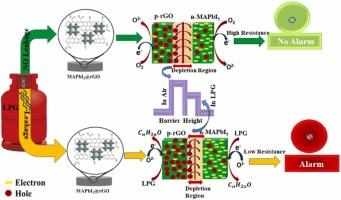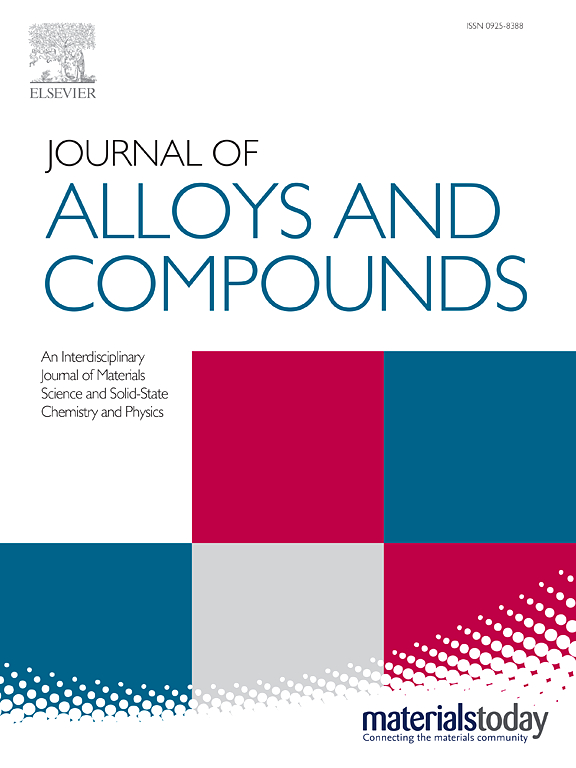Perovskite-based p-n type heterojunction decorated with reduced graphene oxide for improved liquified petroleum gas sensing
IF 6.3
2区 材料科学
Q2 CHEMISTRY, PHYSICAL
引用次数: 0
Abstract
In both home and business settings, effective LPG detection is essential for preserving security and averting possible risks. This work explores the impact of reduced graphene oxide (rGO) ornamentation on chemi-resistive LPG sensing using MAPbI3 halide-perovskite, which is manufactured via a straightforward co-precipitation technique. Because of its strong surface reactivity and semiconducting characteristics, MAPbI3 is essential to LPG sensing. When r-GO is used to decorate MAPbI3, a p-n heterojunction is created, which greatly improves charge carrier migration and separation and improves junction performance. When subjected to 500 ppm LPG, the MAPbI3@0.2 rGO heterojunction showed a remarkable response of 83 % compared to the pristine MAPbI3 at 120 °C. It also had a reduced response time of 46 s and a recovery time of less than 500 s. The increased specific surface area of rGO, which results in more active sites for LPG molecule adsorption and less charge transfer resistance, is thought to be responsible for this improved performance. Amazingly, the material performed consistently over several cycles and maintained its sensitivity at 80 °C. The sensor has potential for use in commercial applications because of its great sensitivity and stability at low temperatures. The efficiency of MAPbI3@rGO p-n heterojunction as dependable LPG sensors is highlighted by this work, providing notable increases in safety in a variety of settings.

还原氧化石墨烯修饰钙钛矿基p-n型异质结用于改进液化石油气传感
在家庭和商业环境中,有效的液化石油气检测对于保护安全和避免可能的风险至关重要。这项工作探讨了还原氧化石墨烯(rGO)修饰对使用MAPbI3卤化物钙钛矿(通过直接共沉淀技术制造)的化学耐蚀LPG传感的影响。由于其强烈的表面反应性和半导体特性,MAPbI3对LPG传感至关重要。当使用r-GO修饰MAPbI3时,形成p-n异质结,大大改善了载流子迁移和分离,提高了结性能。当受到500 ppm LPG的影响时,MAPbI3@0.2 rGO异质结在120°C下的响应比原始MAPbI3高83%。它还减少了46秒的响应时间和不到500秒的恢复时间。rGO的比表面积增加,导致更多的LPG分子吸附活性位点和更小的电荷转移阻力,被认为是提高性能的原因。令人惊讶的是,该材料在几个循环中表现一致,并在80°C下保持其灵敏度。由于该传感器在低温下具有很高的灵敏度和稳定性,因此具有商业应用的潜力。这项工作强调了MAPbI3@rGO p-n异质结作为可靠的LPG传感器的效率,在各种环境下显著提高了安全性。
本文章由计算机程序翻译,如有差异,请以英文原文为准。
求助全文
约1分钟内获得全文
求助全文
来源期刊

Journal of Alloys and Compounds
工程技术-材料科学:综合
CiteScore
11.10
自引率
14.50%
发文量
5146
审稿时长
67 days
期刊介绍:
The Journal of Alloys and Compounds is intended to serve as an international medium for the publication of work on solid materials comprising compounds as well as alloys. Its great strength lies in the diversity of discipline which it encompasses, drawing together results from materials science, solid-state chemistry and physics.
 求助内容:
求助内容: 应助结果提醒方式:
应助结果提醒方式:


